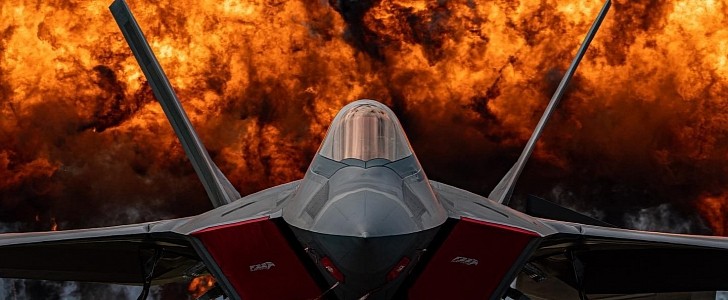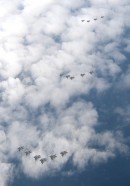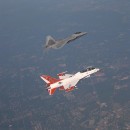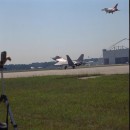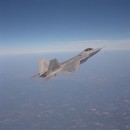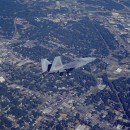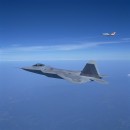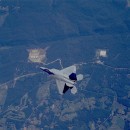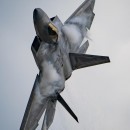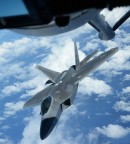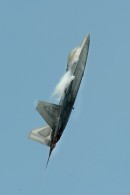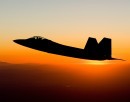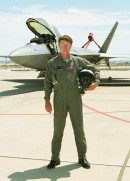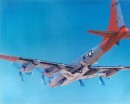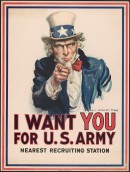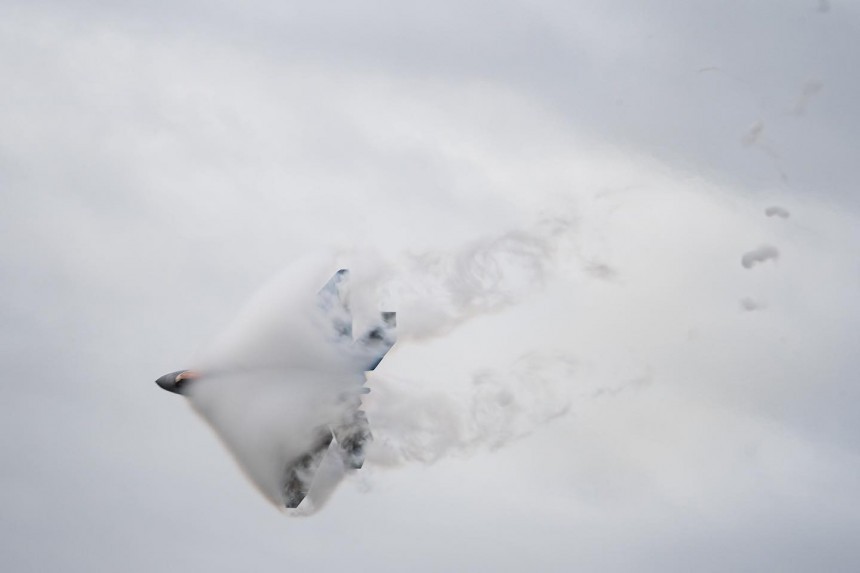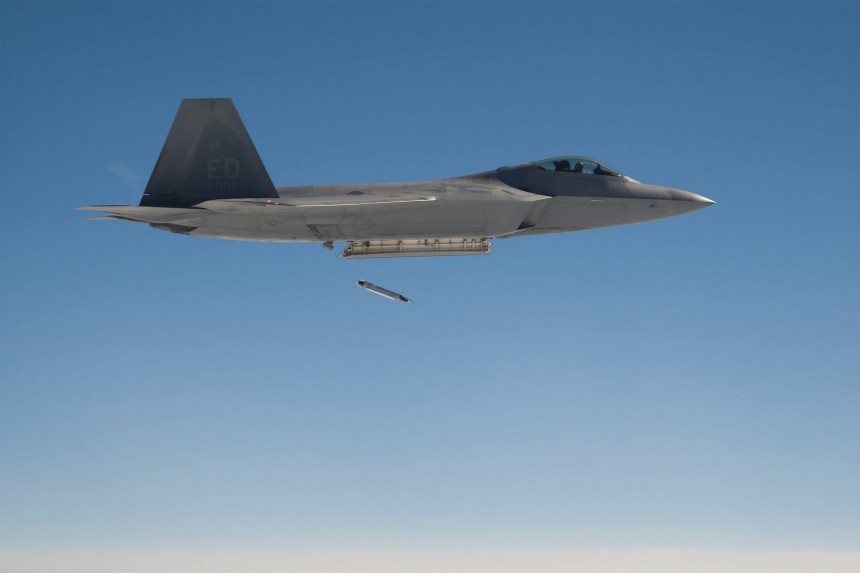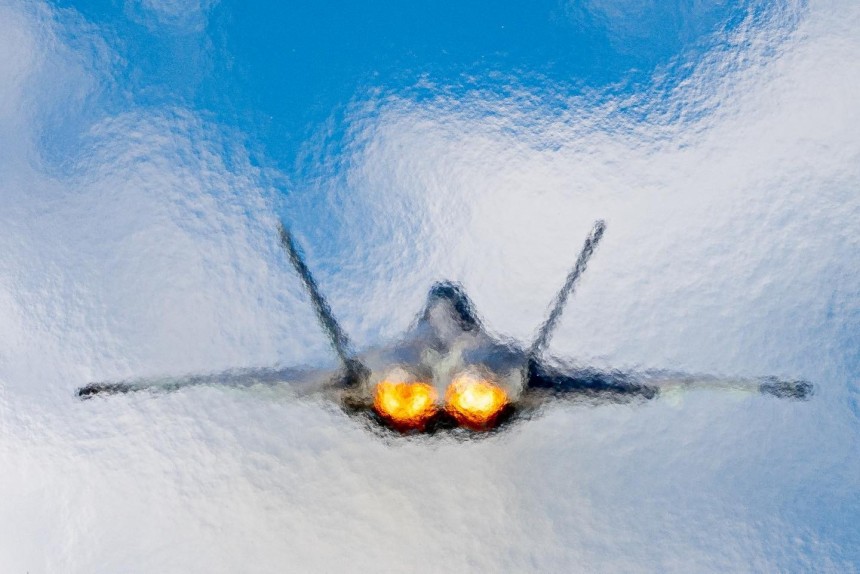Built for undisputed dominance of the skies and everything beneath, the F-22 Raptor first took to the air a quarter of a century ago, on September 7, 1997. It was a test aircraft, the first to go into operational service, and it marked the production phase of the F/A-22 program. A very lengthy program if we are to look at the calendar dates that mark the fighter's destiny.
Its earliest roots trace four decades ago when the Air Force was looking for a replacement for the F-15. Fast-forward a decade, and the YF-22 prototype is up in the air. Add another seven years, and the production version of the F-22 will complete its maiden flight.
The aircraft is one stunning-looking machine. There is something familiar about this fifth-generation doomsday prophet of a fighter jet, and we have two equally cool airplanes to thank: the F-117 Nighthawk and the SR-71 Blackbird.
Both UFO-level designs of Lockheed Martin's Skunk Works Division, the two superjets share more than demeanor with the Raptor. The stealth tech on the F-22 was battle-tested on the shard-style F-117, but the engineers significantly improved it to keep the fifth-gen jet invisible. Powerful computers and advanced aerial warfare technology made the F-22 the great weapon it became.
As for the Blackbird, its space-age titanium alloy kept it fast, high, and uncatchable. So the F-22 benefitted from this, too. While not designed to be as fast as the SR-71, the materials used in the Raptor had to be strong enough to cope with the enormous stresses of sharp maneuvering at high speeds while simultaneously keeping it off the radar.
The magnificent F/A–22 airplanes have the sleek, low-profile design of the SR-71 and the faint radar signature, first made famous by the F-117 and B-2 Spirit. The F-22 generates a confusing radar print because it has no bumps along the body. All while supercruising at "Mach two-point-it's-classified" speeds.
Enough to keep it undetected until it's too damn late to act."First look, first shot, first kill in all environments" is a motto worthy of the Raptor nameplate. The airplane can get close to its targets, deliver its grim-reaping payload and get out before the enemy even hears it, let alone do something about it.
Its impressive sky-high capabilities pale in comparison to the galactic price tag of the overall F-22 Project. Close to $80 billion overall. At a $143 million cost for each combat-ready jet, and with some $50,000+ spent for every hour of operating the 21st-century war machine, the F-22 is still unmatched "by any known or projected adversary fighter aircraft." (U.S. Air Force claims)
And maybe this was the project's deadliest flaw. The project emerged shortly after the Cold War, already obsolete in purpose because the USSR had already collapsed. There was no one left to fight the F-22, and it was far too technologically advanced for any remaining foe.
Nonetheless, 195 F-22s are in service, only a quarter of what the Pentagon originally predicted it would need. Furthermore, a little over half of those might actually be mission capable, according to some estimates.
However, geopolitics aside, the fighter is one extraordinary masterpiece of avionics. Invisible on radar, the airplane is far from the general perception of an Armageddon-bringing aircraft. No visible missiles, no bombs, no menacing display of weapons.
Don't be fooled, though; it carries a lot of firepower, all inside its internal armament's bays (another world-first-and-only). The single-seat fighter is a supersonic flying arsenal: two AIM-9 heat-seeking air-to-air missiles sit in the side arms compartments. The underbelly weapon bays can carry six AIM-120 radar-guided air-to-air missiles. Two 1,000-pound (453 kg) JDAMs and two air-to-air missiles arm the striker for air-to-ground missions.
And if that wasn't enough, the F-22 Raptor could spread 480 rounds of democracy from its M61A2 20-millimeter six-barrel cannon at a rate of 100 hits per second. The Gatling-type rotary apocalypse is enough to obliterate all its fifth-gen enemies with one trigger pull.
That's right; it is unrivaled in both capability and numbers. Russia and China put together only have a handful of stealth fighters.A great warrior with a terrible active-duty record. A fantastic machine that's too good for its times. A four-decade-long project that ended abruptly in the least honorable manner. It flew 25 years ago today, and forever marked aviation history.
Perhaps it is not at all arbitrary that history today celebrates two similarly significant events of the U.S. military might.
First, September 7, 1956, is the day that set space flight history. Captain Iven Carl Kincheloe, Jr. flew a Bell X-2 rocket plane to an altitude of 126,200 feet (38,465 meters). Kincheloe became the first pilot to go beyond 100,000 feet (30,480 meters), thus earning the name "The First of the Spacemen" amid the space-conquering armada under the flag of Uncle Sam.
And speaking of Uncle Sam, legend has it that today is the day the term "Uncle Sam" was coined. Some two centuries ago, a Yankee meat packer stamped his barrels with the letters U.S. (for United States). The barrels contained meat for the U.S. army, and the soldiers quickly devised the Uncle Sam interpretation. Coincidentally, the contractor, Samuel Wilson, was known as Uncle Sam back in his hometown of Troy, New York.
The aircraft is one stunning-looking machine. There is something familiar about this fifth-generation doomsday prophet of a fighter jet, and we have two equally cool airplanes to thank: the F-117 Nighthawk and the SR-71 Blackbird.
Both UFO-level designs of Lockheed Martin's Skunk Works Division, the two superjets share more than demeanor with the Raptor. The stealth tech on the F-22 was battle-tested on the shard-style F-117, but the engineers significantly improved it to keep the fifth-gen jet invisible. Powerful computers and advanced aerial warfare technology made the F-22 the great weapon it became.
As for the Blackbird, its space-age titanium alloy kept it fast, high, and uncatchable. So the F-22 benefitted from this, too. While not designed to be as fast as the SR-71, the materials used in the Raptor had to be strong enough to cope with the enormous stresses of sharp maneuvering at high speeds while simultaneously keeping it off the radar.
Enough to keep it undetected until it's too damn late to act."First look, first shot, first kill in all environments" is a motto worthy of the Raptor nameplate. The airplane can get close to its targets, deliver its grim-reaping payload and get out before the enemy even hears it, let alone do something about it.
Its impressive sky-high capabilities pale in comparison to the galactic price tag of the overall F-22 Project. Close to $80 billion overall. At a $143 million cost for each combat-ready jet, and with some $50,000+ spent for every hour of operating the 21st-century war machine, the F-22 is still unmatched "by any known or projected adversary fighter aircraft." (U.S. Air Force claims)
And maybe this was the project's deadliest flaw. The project emerged shortly after the Cold War, already obsolete in purpose because the USSR had already collapsed. There was no one left to fight the F-22, and it was far too technologically advanced for any remaining foe.
However, geopolitics aside, the fighter is one extraordinary masterpiece of avionics. Invisible on radar, the airplane is far from the general perception of an Armageddon-bringing aircraft. No visible missiles, no bombs, no menacing display of weapons.
Don't be fooled, though; it carries a lot of firepower, all inside its internal armament's bays (another world-first-and-only). The single-seat fighter is a supersonic flying arsenal: two AIM-9 heat-seeking air-to-air missiles sit in the side arms compartments. The underbelly weapon bays can carry six AIM-120 radar-guided air-to-air missiles. Two 1,000-pound (453 kg) JDAMs and two air-to-air missiles arm the striker for air-to-ground missions.
And if that wasn't enough, the F-22 Raptor could spread 480 rounds of democracy from its M61A2 20-millimeter six-barrel cannon at a rate of 100 hits per second. The Gatling-type rotary apocalypse is enough to obliterate all its fifth-gen enemies with one trigger pull.
Perhaps it is not at all arbitrary that history today celebrates two similarly significant events of the U.S. military might.
First, September 7, 1956, is the day that set space flight history. Captain Iven Carl Kincheloe, Jr. flew a Bell X-2 rocket plane to an altitude of 126,200 feet (38,465 meters). Kincheloe became the first pilot to go beyond 100,000 feet (30,480 meters), thus earning the name "The First of the Spacemen" amid the space-conquering armada under the flag of Uncle Sam.
